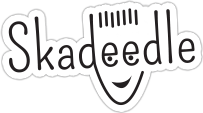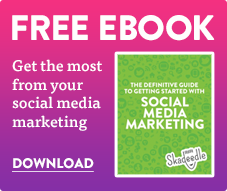From Start to Finish in 10: Email Marketing
It isn’t breaking news that email marketing is a quick and affordable (sometimes even free) way to reach, serve and grow your base of customers. Email has been around for a while so it’s easy to overlook the basics without even realizing it. At Skadeedle we’re here to help you with all the dets about email marketing, from picking the right provider, to crafting the perfect email and sending it out (and what to do after!) Grab your coffee, a note pad and let’s go!
1 Picking the Right Email Marketing Service
Unfortunately you can’t just fire up your old Gmail account and send out your company newsletter. There are handfuls of companies called Email Service Providers that take the business of sending email seriously. Here are three things to look for when selecting an ESP. You want to look for key features like templates, reporting and social sharing.
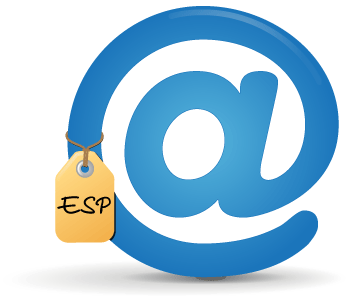
Sending emails shouldn’t cost you an arm and a leg and many companies offer a free trial, and some offer pay as you go plans, which is a good place to start and you can always move to a monthly plan when your send frequency or volume increases. Since you are paying hard earned money to send your emails delivery is a key feature and most ESPs tout a delivery rate in the upper 90’s.
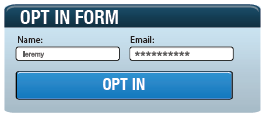
Get opt in permission from subscribersto be added to your email list
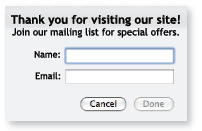
2 Email Marketing List
There are two golden rules for growing your email marketing list the right way.
- Never rent or purchase a list and
- You must get opt in permission from subscribers to be added to your email list.
You just can’t fire off an email to someone you traded business cards at some conference. That’s a sure fire way to get reported as spam and not a good way of engaging and connecting with a potential customer. Here’s a quick tip, you can create an opt in form on your Facebook page to collect email addresses to add to your list. You should also have an opt-in form on your site, your blog and anywhere else that customers and potential customers go so interested visitors can sign up to hear more from you. Need other ways to grow your list? Check out these 50 Ways.
3 Subject Line
This is the tipping point for your email. It’s important because it’s what compels your recipient to actually open it. In fact, over 64% of readers decide to open an email because of the subject line alone. The point is to creatively tell your readers what your email is about. Need some help? Check out Dee’s Convo Starters!
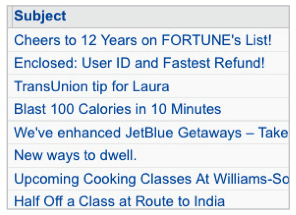
Improve your open rate with a great subject line.
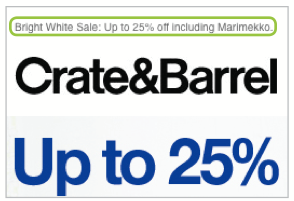
Crate&Barrel’s pre-header highlights a sale.
4 Pre-Header
The pre-header is the text that’s displayed before the header or body of your email message and is visible in the preview pane. It can consist of a call-to-action phrase or links. It’s an important element of the email, because it provides more context about the email and helps the recipient determine whether to read the rest of your email. Are you including a promo code or offer in your email? If so, include it in the pre-header.
5 Personalization
People’s inboxes are filled with emails everyday. Think about it, would you open an email that says “Hi Sir/Madam/Webmaster,”? We didn’t think so. Just by including your recipient’s first name within your email adds that personal touch, which can boost your open rate. Most good ESPs allow you to do this. You can also personalize your email using other useful information like a birthday, or maybe some of their recent purchases or other relevant information.
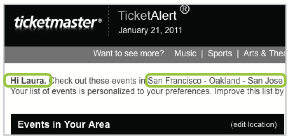
This Ticketmaster email uses first name and location personalization.
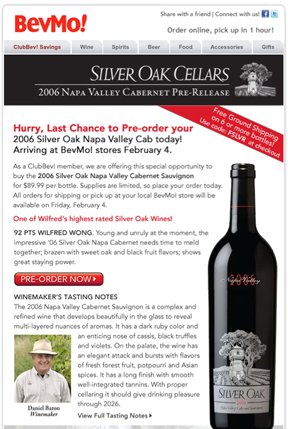
80/20 rule: 80% text and 20% images.
6 Images
Not too many people want to read a giant blob of text when they open your email. Adding images to your emails goes a long way in making them more visually appealing. Images also help your reader get a quick sense of what the content of the email is.
80/20 Rule: You don’t want your images to do all the talking, so use the 80/20 rule as a good guideline – 80% text and 20% images. Many email applications and browsers often block email images until your recipient turns them on manually, so if your recipient can’t see your images, so you want to make sure you have some text backup in there to add context of what the image is, or the offer it represents.
Link Your Images! When people see a picture in an email, they naturally want to click on it in order to get more info. Pro Tip: Use Alt Text, this will show text instead of the image when someone has his or her images turned off. Alt text should explain what the image is.
7 Call to Action
Every email should include a call to action. A call to action should quickly tell your recipient the action you want them to take. CTAs can affect the click through rate of your emails, more clicks, means they got the point of your email. Some examples of effective call to actions are: Get 50% Off, Read More, Join Now, Find Out More, and Buy Now.

Williams Sonoma uses a strong CTA: Buy Now

Self magazine links to their social site pages.
8 Social Share Buttons
You don’t often see emails without social media sharing buttons calling out for a like or a tweet. The truth is social share buttons and emails are the perfect pairing and by including these buttons, you can get your readers to share your email content with their social networks and get more eyeballs on your message. Your ESP should track how many likes, tweets and social shares you get which is great to measure the success of your email.
9 Send
Who What When? Before you push send, you’ll need to consider the 3 w’s – Who, what, when. You might want to send a 20% coupon to customers that have made a purchase in the past 6 months. On the other hand you don’t want to send your welcome letter to someone that has been getting your newsletters for the past 5 years. Once you know what you want to send to whom, you can test out different send days and times and see what works best for your readers.
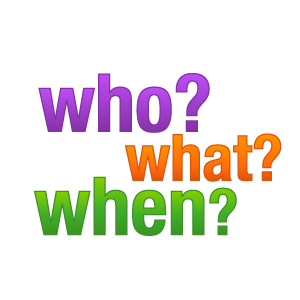
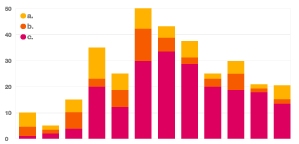
10 Review Your Stats
Your email has been sent and is now “in the wild”. Now what? Your ESP will provide you heaps of stats for you to understand how your message performed and how you might change it for the next send. If you didn’t get the open rate you wanted try changing up the subject line. Try different times and days that you send and see where you get the best response.
Remembering and practicing the basics can go a long way toward making your email marketing messages rock and we’ll be cheering you on.
